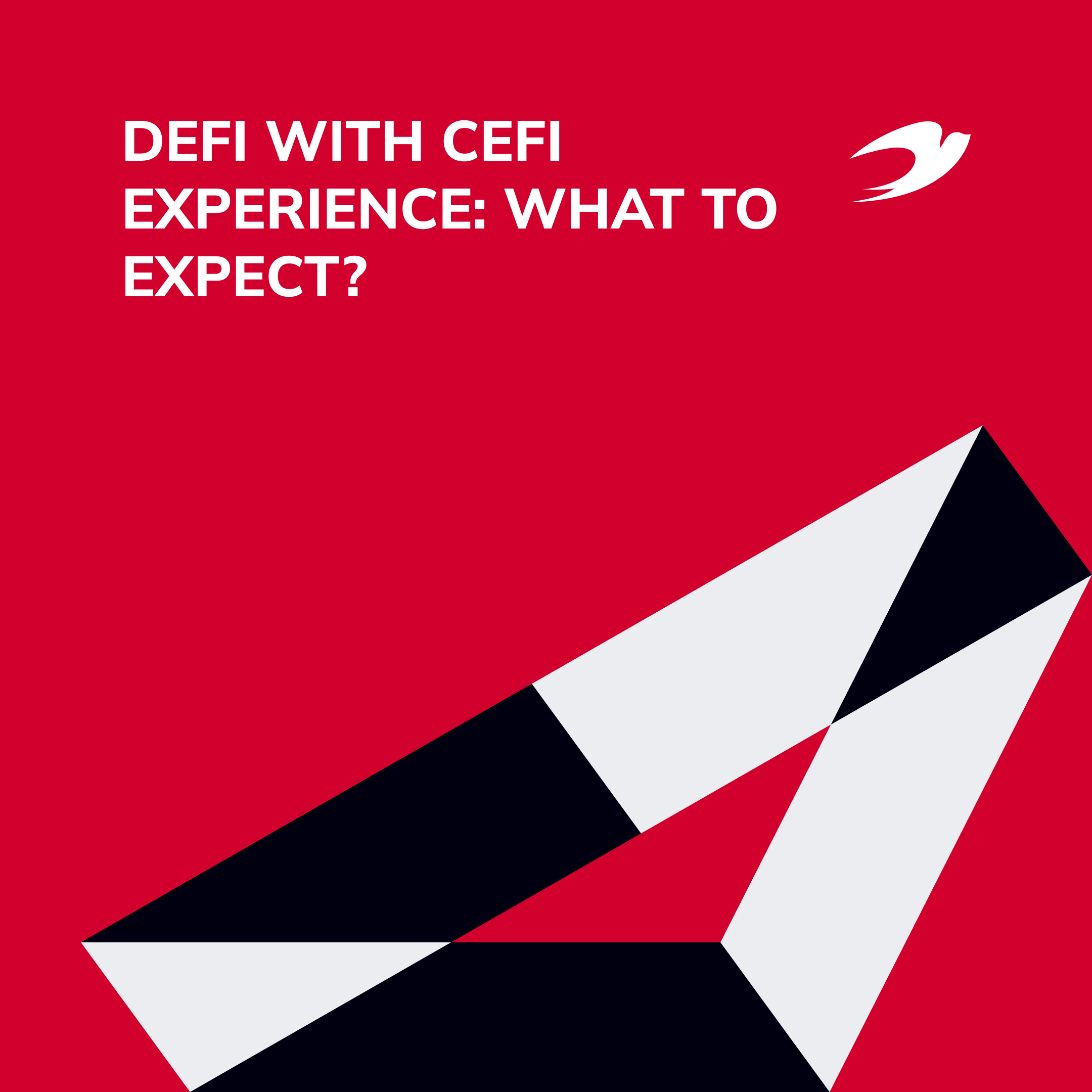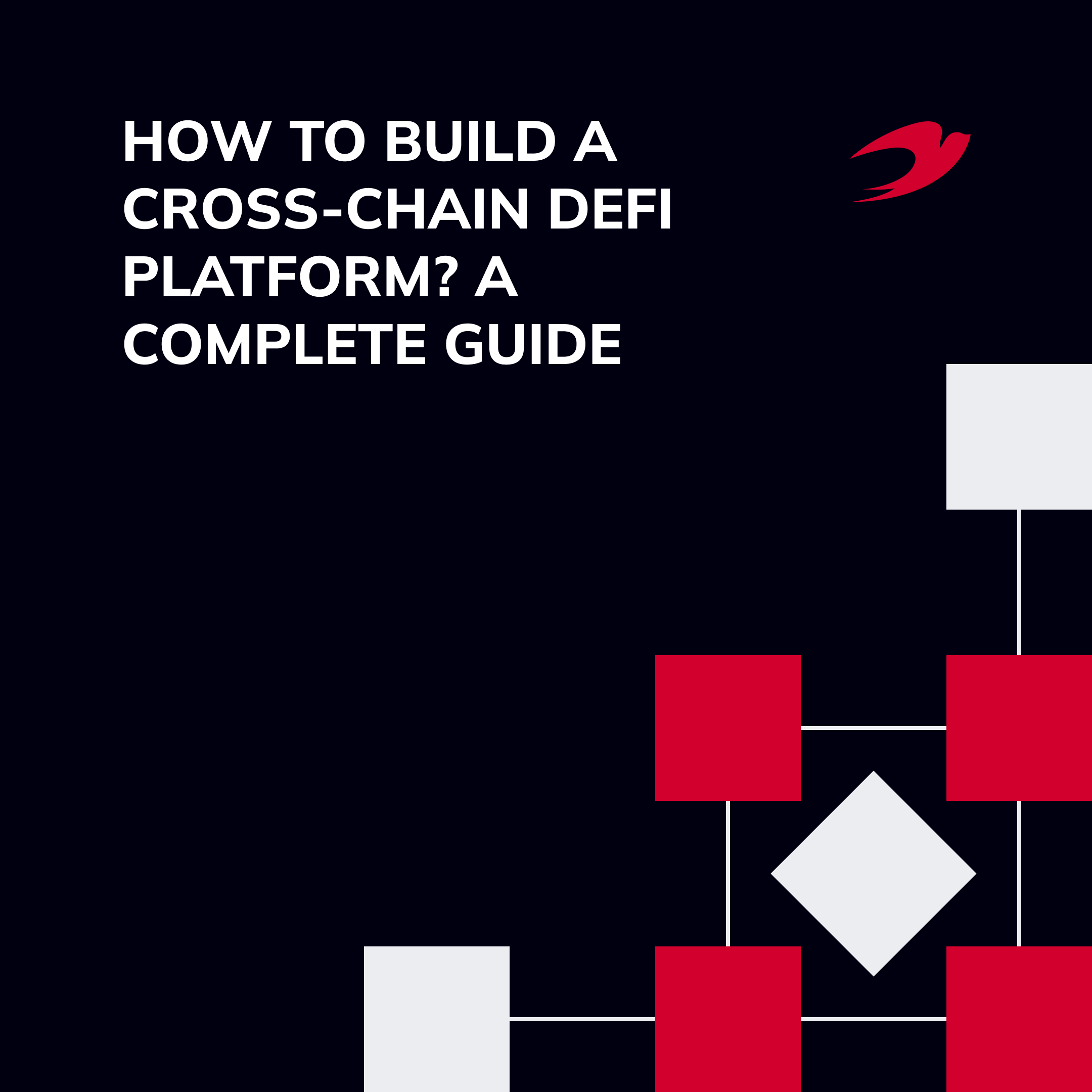Are DeFi and CeFi the future of finance? Undoubtedly. DeFi and CeFi coexist as an answer to the traditional financial system. These are 2 various approaches to processing crypto transactions with their own benefits and limitations. And both are in great demand among people. According to Statista, DeFi users are expected to be 9.33m by 2027. It’s actively discussed how to create a unified platform that will unite the benefits and solve the limitations of each approach.
At IdeaSoft, we worked extensively in the DeFi and CeFi domains. Our case studies demonstrate our vast expertise in a variety of industries. This is why we aim to shed light on DeFi and CeFi in crypto. This article will discuss the difference between DeFi and CeFi as well as how to create a hybrid DeFi with CeFi platform.
Table of Content:
- What is DeFi?
- What is CeFi?
- DeFi and CeFi Benefits and Limitations Comparison Table
- Creating a Hybrid DeFi with CeFi Platform
- The Future of DeFi and CeFi
- Summary
Want to build DeFi with CeFi platform?
Contact us at IdeaSoft right away! Combining DeFi’s permissionless protocols with CeFi’s regulated environment requires a multifaceted approach to risk management. Together, we will build a solid and secure platform with user-centric and efficient crypto experience.
What is DeFi?
DeFi (Decentralized Finance) is the answer to the traditional financial system, the control of which is in the hands of top managers and regulators.
DeFi principles imply a decentralized approach to providing financial services through blockchain and a fully automated approach through smart contracts. It is about rejecting single control centers and intermediaries in favor of distributing responsibilities among market participants. For example, instead of banks in DeFi, loans are issued by users who want to make money. This is how Compound works.
Advantages of DeFi
Refusal from centralized management opens access to fair financial service prices. In the DeFi market, the price is formed by the market participants themselves, who are forced to follow the demand. Classic banks, in turn, depend on the Central Bank and can set prices that are only in their interests, as they are monopolists.
Other primary advantages of DeFi include:
- Accessibility. A user does not need to leave the house to get a financial service on the DeFi market. It is enough to have at hand a gadget with access to the network.
- Anonymity. It is possible to work confidentially on the DeFi market.
Since DeFi offers comprehensive advantages over the traditional financial system, it is profitable to create a DeFi project in 2024 when there is still not so much competition.
Limitation of DeFi
The main disadvantage of DeFi is the insufficiently high level of security. News about protocol hacks in the DeFi market is a frequent phenomenon. Also, DeFi platforms are usually inferior to their centralized competitors in terms of ease of use, speed of operation, and functionality.
What is CeFi?
CeFi (Centralized Finance) refers to centrally managed platforms that provide access to the market of digital assets. An example of such a project is the largest crypto exchange Binance. Control over the trading platform is in the hands of its owners. At the same time, Binance opens access to tools for conducting transactions with cryptocurrencies, which have become a decentralized answer to traditional money.
Advantages of CeFi
CeFi projects are usually superior to decentralized counterparts in terms of speed. Also, centralized platforms are more functional and convenient. They offer regulatory compliance, integration with fiat currencies, higher liquidity, and stability.
CeFi emphasizes storing all data in one place. For example, in case of password loss or if you forget your password, everything can be restored. With decentralized finances, it is unlikely to happen. However, some DeFi projects are already working on solutions to combine them.
Although there are DeFi-analogs of many CeFi projects, CeFi is superior. A vivid example is the situation in the crypto exchange market. There are many decentralized exchanges (DEXs) available to users. Despite this, crypto community participants continue to prefer centralized crypto exchanges.
Limitation of CeFi
The main disadvantage of CeFi projects is their centralized nature. Control over the platform and its users’ money is in the hands of managers who can act as they see fit. Also, this approach often implies the de-anonymization of users.
DeFi and CeFi Benefits and Limitations Comparison Table
CeFi and DeFi are often confused. We have created 2 comparison tables of CeFi vs. DeFi to help you better understand these terms. First, let’s compare their benefits.
| Decentralized Finance (DeFi) | Centralized Finance (CeFi) | |
| Financial Inclusion | Facilitates financial services for the unbanked and underbanked. | Offers limited access for the unbanked and underbanked. |
| Transparency and Trustlessness | Leverages blockchain for transparency and trust. | Relies on regulatory oversight for transparency. |
| Decentralization | Eliminates intermediaries, mitigating the risk of censorship. | Allows for swift and efficient transaction processing. |
| Speed and Efficiency | Ensures rapid transaction processing and ample liquidity. | Maintains prompt and efficient transaction processing. |
| User-Friendly Experience | Can be intricate for non-technical users. | Presents user-friendly interfaces with dedicated support. |
| Asset Custody | Empowers users with direct control over their assets. | Ensures the security and safety of user assets. |
Building DeFi product with CeFi features?
Let us help you with our expertise to create a secure platform based on your unique requirements!
Now, you understand all the benefits of CeFi and DeFi. Next, let’s move to their limitations.
| Decentralized Finance (DeFi) | Centralized Finance (CeFi) | |
| Scalability Issues | Faces network congestion and high transaction fees. | Encounters scalability constraints during peak usage. |
| Security Concerns | Prone to smart contract vulnerabilities and hacking incidents. | Depends on centralized security measures for protection. |
| Lack of Regulation | May lack legal clarity and investor protection. | Subject to regulatory oversight and potential compliance issues. |
| Lack of Decentralization | Might lack genuine decentralization, platform-dependent. | Operates with centralized control and susceptibility to manipulation. |
| Counter party Risk | Minimizes reliance on intermediaries, but counterparty risk persists. | Reduces counterparty risk through centralized control. |
| Limited Transparency | Offers open source code but may have restricted insight into platform operations. | Furnishes more information about its operations. |
We hope these 2 comparison tables have helped you to better navigate these terms. Next, we will provide you with some recommendations on how to combine DeFi and CeFi and leverage the advantages of DeFi with CeFi platform.
Creating a Hybrid DeFi with CeFi Platform
Well, what is the reason for integrating CeFi approaches into decentralized platforms?
Centralized finance platforms often offer content and onboarding that helps beginners feel more comfortable exploring crypto.
UniswapLabs
The flawless onboarding and ongoing support have played the major role in customer acquisition for a long time. Therefore, the application of a few well-known communication strategies and technology hybrids has a great potential to create a new level of DeFi and boost blockchain adoption we all team about.
There are a few successful DeFi platforms implementing CeFi models, featuring dYdX example as one of the most known and successfully implemented. At IdeaSoft, we were involved in creating another finest DeFi product with CeFi features – Orderly.Network. Tips below are complied based on our broad experience.
Embracing the Best of Both Worlds
A delicate balance must be struck between decentralized and centralized elements to craft a successful hybrid DeFi with a CeFi platform. Leveraging blockchain technology ensures transparency and trust by recording transactions on a tamper-proof ledger. At the same time, incorporating centralized elements enables the platform to offer fast, efficient, and user-friendly services.
Blockchain’s immutable and transparent nature is a cornerstone of decentralized systems. Integrating blockchain technology into the hybrid platform ensures that all transactions are recorded securely, fostering user trust.
A success of any financial platform lies in its ability to provide users with fast, efficient, and user-friendly services. Your hybrid DeFi with a CeFi platform should focus on streamlining processes, reducing transaction times, and maintaining a seamless user experience.
Overcoming the Challenges
Establishing a successful hybrid DeFi with a CeFi platform takes time and effort. Addressing these issues head-on is essential for the platform’s long-term viability.
Scalability remains a significant concern for decentralized platforms. The hybrid DeFi with a CeFi platform should explore and implement layer-2 solutions to counteract this. Moving some transactions off the main blockchain can significantly improve scalability.
Security is another paramount concern in the world of finance. Your platform must prioritize implementing rigorous security measures, including:
- Encryption
- Multi-factor authentication
- Secure smart contract development
In DeFi, prioritizing security is a must. Without top security measures, your DeFi with a CeFi platform is obliged to fail.
User Education and Risk Management
Educating users about the unique features and risks associated with the hybrid platform is key to fostering a secure and informed user base.
Users need to be knowledgeable about the distinctive features of your platform. Providing clear and accessible educational materials ensures that users can make confident decisions.
At the same time, risk management is a fundamental aspect of any financial platform. The hybrid nature of the platform requires robust risk management strategies to protect user assets. This includes:
- Mechanisms for handling potential smart contract vulnerabilities
- Insurance alternatives
- Emergency plans for unforeseen events
Considering these tips, you can create a successful hybrid DeFi with CeFi platform.
The Future of DeFi and CeFi
Interoperability becomes a cornerstone for progress. Blockchains and financial ecosystems are poised to prioritize seamless interoperability, fostering fluid asset movement between DeFi and CeFi platforms. This interconnected approach enhances efficiency and signifies a commitment to providing users with a more cohesive and integrated financial experience.
Security, a paramount concern in the decentralized space, is expected to reach new heights. Both DeFi and CeFi platforms will fortify their security measures, conducting rigorous audits and implementing insurance protocols to ensure the robust protection of user funds. This commitment to security is essential for building and maintaining trust as the financial landscape evolves.
After the FTX collapse and all the volatility within CeFi products, users psychologically returned to what crypto was created for – non-custodial products and DeFi. However, those have difficult entry points for the average Web2 user and most Web3 audience.
That’s why the companies are now competing for the audience by creating a simpler user experience within DeFi products. This way, they want to lower that barrier and make the products more mass-market-oriented.
Andrey Lazorenko, CEO at IdeaSoft
In tandem with these developments, the regulatory landscape is anticipated to mature, offering clearer guidelines and frameworks for the coexistence of DeFi and CeFi. This regulatory clarity is poised to play a pivotal role in encouraging mainstream adoption, providing a stable foundation for the growth and evolution of the financial ecosystem.
Today, investors have no desire to invest in small projects with just “an idea” in the roadmap as it was in 2021. They have realized all the DeFi threats. They understood that CEX and DEX are like banks with additional benefits. As a result, the blockchain world aims to adopt the standard СeFi products, port them to the decentralized world, and improve with DeFi features.
German Stognieev, CTO at IdeaSoft
Does DeFi have a future? Yes, of course! The future of DeFi and CeFi is not a binary choice but a harmonious evolution, blending the best attributes of both worlds to redefine the future of finance.
Summary
Centralized and decentralized finances have both advantages and disadvantages. For example, DeFi has no intermediaries that inflate prices, while CeFi offers convenient transaction tools. Nevertheless, bridging DeFi and CeFi can be extremely beneficial.
Now, you understand DeFi and the future of finance. Are you ready to be at the forefront of creating DeFi with CeFi platform? Or maybe you want to develop a crypto exchange platform? Contact us at IdeaSoft right now! Together, we will build a future where secure, user-centric, and efficient crypto projects become the new norm.




